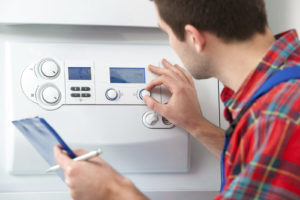
If you’ve been torn between installing a radiant air heater or a forced-air heater, then you are in luck. We now present to you a comparison of the two systems.
The end of the year is fast approaching. Did you know that it will still mostly be cold throughout January and February? The winter solstice has just come and gone, so we are now officially in winter. After the colorful wonderland of the holiday season ends, it could just be a return to a normal, grey, and boring winter as spring begins its approach. If you’ve been torn between installing a radiant air heater or a forced-air heater, then you are in luck. We now present to you a comparison of the two systems.
The Many Types of Heaters
There are multiple types of heating systems for homeowners to choose from; however, they are not all created equal. You will find that they belong to one of two major classifications: either radiant heating or forced-air heating. Both heaters will keep your home warm even on the chilliest days. However, they will go about it in different ways.
A Look at Radiant Heating
Now, let’s turn our attention to the matter at hand: radiant heating. Radiant heat is astoundingly easy to understand – just walk outside and stand in the sunshine for a few minutes. Feel that vitamin D coursing through you and rejuvenating you. That’s how radiant heat works. Radiating is a softer word than blowing, and the actions these verbs describe are appropriately juxtaposed. Some examples of radiant heating systems include boilers, electric heaters, radiators, and heated baseboards.
A Look at Forced-Air Heating
By contrast, forced-air heaters work by heating the air and pushing it around the room. From there, it can spread out throughout the rest of the home. Natural gas or electrical resistance is used to full effect here; these methods typically generate heat. Alternatively, they will draw in heat from outside and distribute it that way. Ductwork, vents, and air handlers are immensely important here. Some examples of forced-air heating methods include furnaces, heat pumps, and ductless heat pumps.
Which One Should You Choose?
We hope that you have more knowledge than you had before. So if you feel ready to make a decision, we’re glad to have helped. Still not sure which one to pick? That’s okay! We have some more advice for you. It comes down to the type of heat you need and what you prefer to have: Radiant heat is a great idea if you have cold tile floors. Meanwhile, forced-air heaters are better for residential environments featuring wall-to-wall carpets and well-maintained ductwork.
We Are Proud of the Company We Keep
William E. Kingswell has remained a distinguished provider of commercial and residential heating and cooling services since 1937. We have provided an unmatched level of customer service to all of our clients, and we enjoy being the preferred HVAC equipment distributor of countless customers. We offer a comprehensive range of high-quality heat pumps, boilers, unit heaters, HVAC accessories, and more. William E. Kingswell works with businesses and homeowners throughout Maryland, Washington, D.C., and Virginia, including Baltimore, Frederick, Annapolis, Fairfax, Manassas, Richmond, Fredericksburg, Virginia Beach, and Leesburg. To learn more about our extensive range of SpacePak, Concord, Allied Commercial, and Bard HVAC equipment, give us a call at 301-937-1900 or contact us today!
